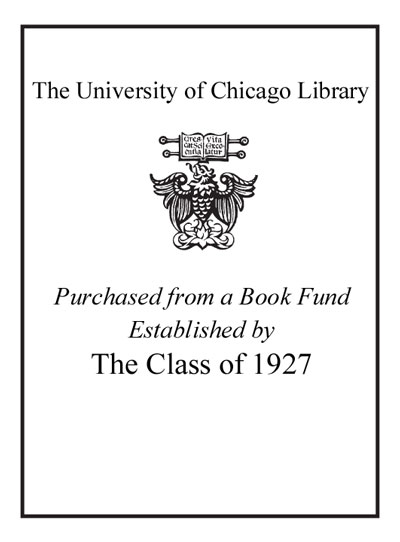Review by Publisher's Weekly Review
Legendary jazz saxophonist and composer Wayne Shorter gets an appreciative appraisal in this excellent biography by music journalist Mercer, who follows this "determinedly eccentric" genius from his early days with Art Blakey's Jazz Messengers in the late 1950s, through his stunning work with the Miles Davis Quintet in the 1960s, to his popular jazz-rock fusion band Weather Report in the 1970s and his ongoing recording and performing. She carefully details his early influences, including his mother's tireless indulgence of his creative whims and his fascination with the 1948 film The Red Shoes, whose central conflict-living for oneself versus living for one's art-would define his career. Mercer expertly investigates Shorter's relationships with the two pianists who most influenced his music, fellow Davis Quintet member Herbie Hancock and Weather Report co-leader Joe Zawinul, as well as the impact of his Buddhist faith on his music. Mercer also shines in her consideration of some Shorter's less critically acclaimed efforts, including his genre-defying work with Joni Mitchell and Brazilian pop singer and composer Milton Nascimento. Interviews with Shorter, Carlos Santana, Amiri Baraka and dozens of others lend depth and tone to this clear-eyed account. B&w photos not seen by PW. Agent, Dave Dunton. (Jan.) Forecast: Laudatory prefaces by Herbie Hancock and Shorter himself, plus blurbs from Carlos Santana, Sonny Rollins and Gary Giddins should signal jazz fans that this is the real deal. (c) Copyright PWxyz, LLC. All rights reserved
(c) Copyright PWxyz, LLC. All rights reserved
Review by Library Journal Review
In his illustrious career, Wayne Shorter has performed with Art Blakey's Jazz Messengers, with Miles Davis when the famed trumpeter merged jazz and rock; with the popular fusion group Weather Report, and as leader and sideman on numerous recordings and live concerts from the 1950s to the present. Still, the saxophonist/composer has remained something of an enigma. In this first biography (written with Shorter's full cooperation and involvement), Mercer, a freelance journalist and music commentator for National Public Radio, puts Shorter in his rightful place at the forefront of jazz in the past half century. She tells his story clearly and with an obvious understanding and love of jazz as an art form, incorporating interviews with Shorter's close friends and colleagues. While Shorter's name might not be as instantly recognizable as that of Sonny Rollins or John Coltrane, any public or academic library with jazz-related holdings would do well to purchase this book. Highly recommended.--James E. Perone, Mount Union Coll., Alliance, OH (c) Copyright 2010. Library Journals LLC, a wholly owned subsidiary of Media Source, Inc. No redistribution permitted. All rights reserved.
(c) Copyright Library Journals LLC, a wholly owned subsidiary of Media Source, Inc. No redistribution permitted.
Review by Kirkus Book Review
Music writer and NPR commentator Mercer provides an elegant, questing biography into the mindset of the great jazz sax man. How do you get into the head of an improviser? It isn't easy, especially when the subject is given to speaking in runes. But the author acquits herself admirably, going straight at Wayne Shorter as he veers this way and that, musically and verbally. Here is a man who takes naturally to harmonic complexities, convoluted melodic lines, and shifting accents, all expressed with confounding metaphysical gravity. This happy jazz buddha is comfortable discussing pre-Socratic ideas or music as a found object (even though he's fully cognizant of the hard, hard work of composing). Exploration, Mercer demonstrates, is Shorter's leitmotif: pursuing instantaneous harmonic ideas, polytonal orbits, and Latin bossa nova beats, he finds the center through all the chord changes. How he comes up with the music is a mystery, but it has as much to do with Buddhism (which he began practicing around the time he formed Weather Report with pianist Joe Zawinul), his family, and his literary probings as it does with exposure to musical forms from classical to bop and all around the musical block. Shorter's work is also stretched by his skepticism of compositional limits: Why eight bars? Why not more or fewer? It can be difficult to make sense of the saxophonist's cerebrations: playing "the barely comprehensible chaos of the world" with Miles Davis, he says, "I felt like a cello, I felt the viola, I felt liquid, dot-dash and colors really started coming." Still, if Shorter remains an enigma, his journey is given color and arc by Mercer, who fills in when the music doesn't speak for itself, providing lightly handled dispatches on familial influences, reviews from the music press, and the world of Brownian motion inhabited by her subject. Shorter winds his own clock, but Mercer gathers the influences that make him tick. (16 pp. b&w photos, not seen) Copyright ©Kirkus Reviews, used with permission.
Copyright (c) Kirkus Reviews, used with permission.
Review by Publisher's Weekly Review
Review by Library Journal Review
Review by Kirkus Book Review

